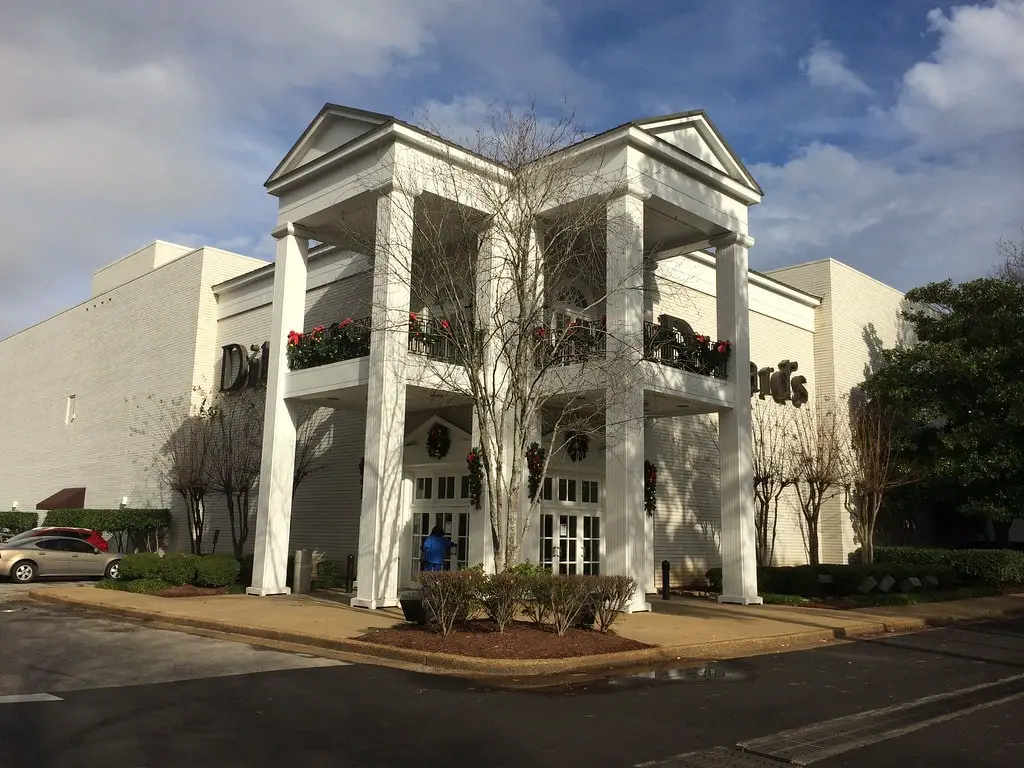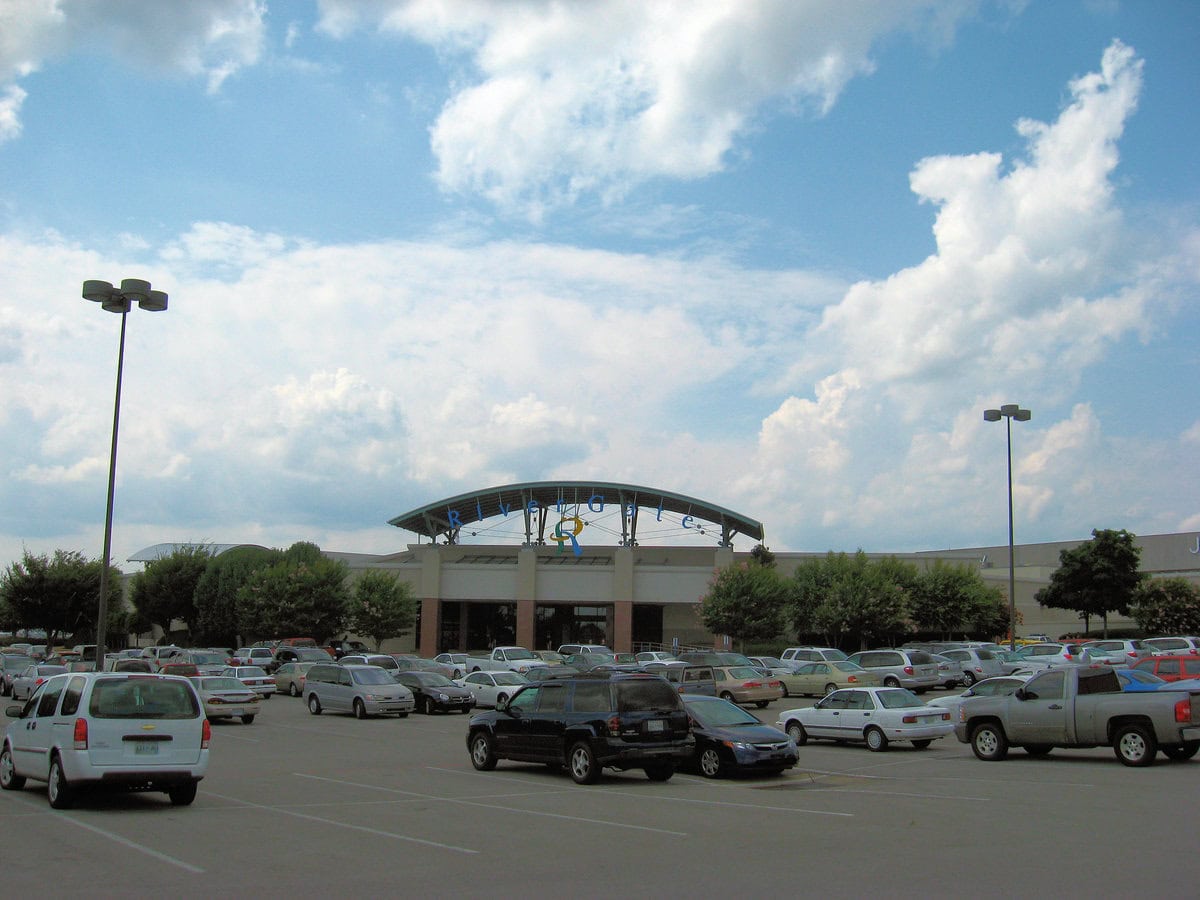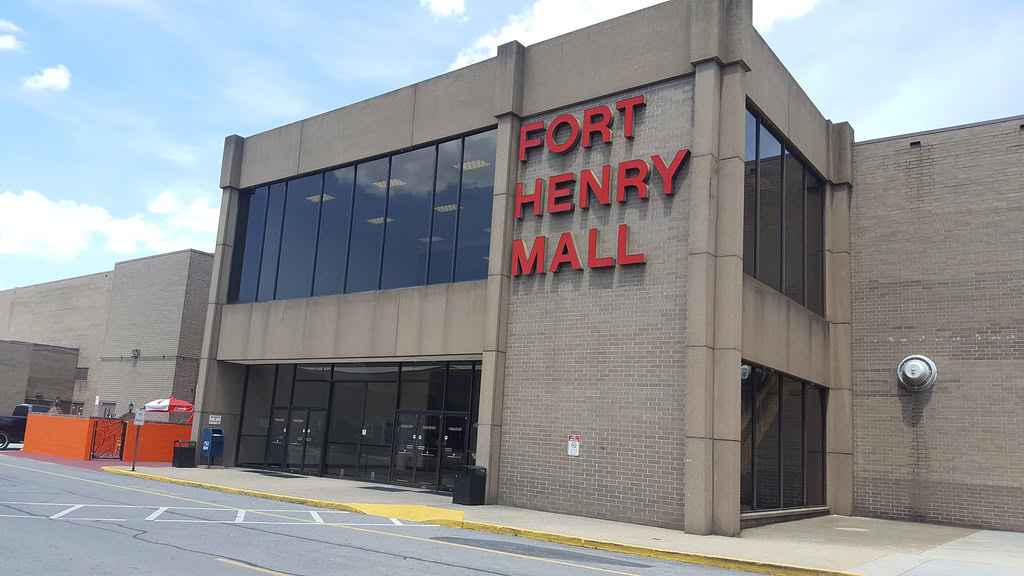The Origins of Oak Court Mall
The story of Oak Court Mall in Memphis, Tennessee, begins long before the shopping center opened.
In 1961, Goldsmith's, a well-known Memphis department store, built a freestanding, three-story building on what would later become the mall's site.
Goldsmith's was a staple in the local retail scene, offering a wide selection of goods and services. The company continued expanding its store through the 1970s.
By 1978, the store had grown with an additional three-story structure that included parking and retail space.
This development was necessary to accommodate the rising demand for the department store's merchandise.
As more Memphians flocked to Goldsmith's, the retail space increased yet again, leading to further expansions in the late 1970s and early 1980s.
However, these expansions laid the foundation for something bigger - an entire mall.
In 1986, Belz Enterprises, a major player in Memphis real estate, began constructing Oak Court Mall adjacent to the Goldsmith's store.
Unlike typical mall designs, Oak Court was unique.
The first floor was built below ground, while the second floor sat at street level, creating a visually striking layout.
The mall officially opened its doors in 1988, with Lord & Taylor and Goldsmith's as the initial anchor tenants.
This marked the start of a new era for Memphis shopping, offering a blend of luxury retail and familiar department stores.
The addition of the mall brought new life to the area, and it quickly became a key destination for things to do in Memphis, Tennessee.
Oak Court's beginnings, rooted in the history of Goldsmith's, helped it grow into an iconic part of Memphis.
It stood out, both in its architectural design and the high-end shopping experience it offered when it first opened.
The Rise of a Retail Powerhouse (1988-2000s)
Oak Court Mall opened in 1988 with great fanfare and quickly became a retail destination in Memphis, Tennessee.
The mall attracted not just residents but shoppers from across the region, drawn in by its upscale retailers and striking architectural layout.
However, changes began early on. In 1992, Lord & Taylor closed its location at Oak Court, and Dillard's took over the space shortly after.
This move proved to be a smart one, as Dillard's established itself as a key tenant in the mall's retail ecosystem.
By 1995, Dillard's expanded further by dividing its space into two distinct areas: one for men's and children's clothing and another for women's fashion.
This division helped diversify the mall's offerings and allowed for a more organized shopping experience.
The rebranding of Goldsmith's to Macy's in 2005 was another turning point for the mall.
Federated Department Stores, the parent company of both Goldsmith's and Macy's, unified its brands under the Macy's name, bringing new life to Oak Court's largest anchor.
Macy's continued to operate the three-story space, though only the second and third floors were open to the public.
This transition marked Oak Court's continued relevance as a top-tier retail destination during the late 1990s and early 2000s.
During this time, Oak Court was home to several prominent stores and regional firsts.
For example, it housed Tennessee's first Starbucks, which opened inside the mall - a key attraction in the 1990s coffee boom.
The mall's collection of local boutiques alongside well-known national brands gave it a unique character.
Even with the retail challenges of the early 2000s, Oak Court maintained its position as a popular shopping spot.

The Decline and New Ownership (2010s-2020s)
By the 2010s, Oak Court Mall faced challenges that were becoming all too familiar to malls across the country.
The rise of e-commerce shifted consumer habits, leading to reduced foot traffic in traditional retail spaces.
Although Macy's and Dillard's remained the mall's cornerstone stores, the departure of smaller retailers and declining patronage began to impact the overall atmosphere of the mall.
One of the more notable moments in this period was the closure of Starbucks in 2013.
Once the first in Tennessee, this Starbucks was moved inside Macy's to a smaller space on the second level.
Though the change was relatively small, it symbolized a shift in the mall's fortunes as retailers began to downsize or leave entirely.
In 2021, Oak Court Mall experienced another setback when Dillard's closed its men's and children's stores, leaving only the women's department operational.
The once-sprawling Dillard's presence at the mall was reduced to a fraction of its former size, reflecting the challenges facing department stores and the mall itself.
In the last years, Oak Court Mall also made headlines after several incidents involving thefts, assaults, and even a fatal shooting in the parking lot.
These crimes, especially violent ones, raised concerns among shoppers and local authorities.
As a result, the mall has been working on improving security measures in an attempt to restore public confidence.
As financial pressures mounted, the mall fell into foreclosure, and in March 2023, it was sold to Greystone Special Servicing for $18 million.
However, it wasn't long before the property changed hands again.
By December 2023, the local Poag Development Group purchased Oak Court Mall for about $14 million and, later, the Macy's store building in September 2024.
This marked a new chapter for the mall, with plans for revitalization that would attempt to adapt the space to the changing needs of modern retail and community use.

The Present and Future Vision for Oak Court Mall
As of 2024, Poag is focused on reimagining the 850,000-square-foot mall, envisioning a space that blends retail with experiences more in line with what today's shoppers seek.
The plans include incorporating elements like dining, entertainment, and possibly even residential spaces.
By modernizing the mall's offerings, Poag Development Group aims to create a more vibrant and engaging experience for visitors.
JLL, a major real estate services company, has been brought on to manage the property.
Their expertise in mall management will be critical as they partner with Poag to reshape Oak Court's future.
Together, they are expected to address the property's declining foot traffic by offering a combination of retail, events, and attractions that draw in a broader audience.
Poag's approach to revitalization is community-driven, with plans to involve local stakeholders in shaping the mall's redevelopment.









